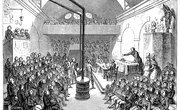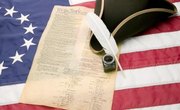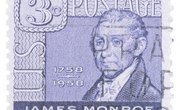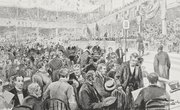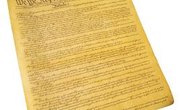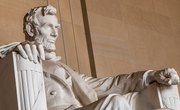At the end of the American Revolution, two political philosophies dominated American politics. Some of the nation's founders, like Alexander Hamilton, believed in a strong central government while others shared the sentiments of Thomas Jefferson that the states should dominate the political system. These two philosophies of government grew further apart and ultimately led to the formation of America's first political parties.
Hamilton and a Strong Central Government
Alexander Hamilton firmly believed in the need for a powerful central government. He had been an officer in the American army during the Revolution, and saw first-hand the results of a weak central authority. While soldiers froze and starved to death, the Continental Congress could only beg for state assistance. Hamilton had powerful allies, including George Washington and James Madison, although Madison later questioned a too-powerful federal government and came to oppose Hamilton.
Jefferson and the Power of the States
Thomas Jefferson served as ambassador in France during the American Revolution. He believed the threat of tyranny was ever-present in a strong central government. A proponent of the need for state sovereignty, Jefferson believed political power should come from the bottom up. Jefferson believed the union of the states was a voluntary one, and if the national government exceeded its enumerated powers, the states had the power to nullify federal law.
The Federalists
After the Constitutional Convention in Philadelphia, those supporting a strong central government realized the challenge of convincing the states to ratify a document that surrendered much of their sovereignty, so Hamilton and Madison wrote a series of argumentative pamphlets called "The Federalist." In his farewell address after serving two terms as the nation's first president, George Washington warned of the danger of political parties. Nevertheless, Alexander Hamilton formed the first political party during Washington's term, called the Federalists. The Federalist Party's only successful presidential candidate was John Adams.
The Democratic-Republican Party
Jefferson and other Anti-Federalists argued against ratification of the Constitution and even suggested a second convention to redraft the document. They published their own series of pamphlets in opposition to the "The Federalist," but offered no suitable alternatives to the states and lost the ratification debate. Jefferson and Madison formed a party to oppose the Federalists called the Democratic-Republican Party.
It was not until after Washington's death that the two parties played a major role in the American political system. In an era known by historians as the "First Party System," the Democratic-Republican Party dominated the first quarter century of American politics. Both Madison and Jefferson became presidents and solidified the power of their party, while that of the Federalists gradually waned. By 1828, the Federalist Party had ceased to exist.
Related Articles
References
Writer Bio
Charles Hooper began writing as a career in 2009. Since then he has published a nonpartisan political advocacy book and hundreds of articles. An honors graduate from the University of North Carolina at Asheville where he concentrated in sociology and political science, he later earned a Masters degree in social work from the University of North Carolina at Chapel Hill.



